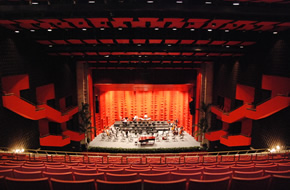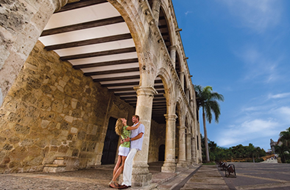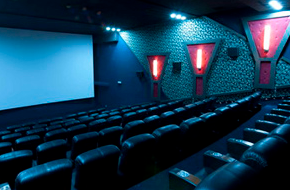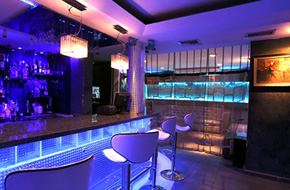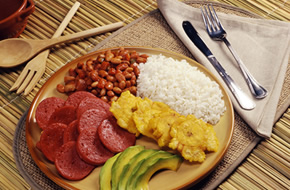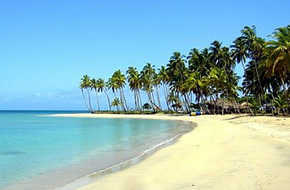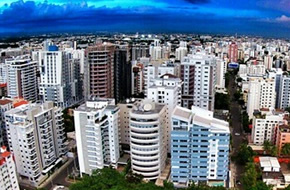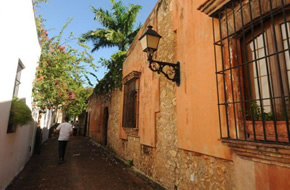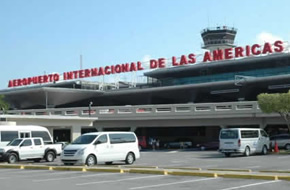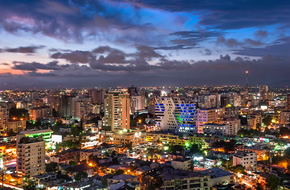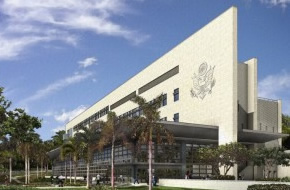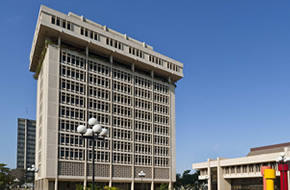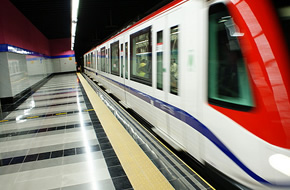General Information

Thinking of a beautiful island, where the tropical Caribbean sun illuminates the sky, the turquoise blue sea is endless, the spectacular mountains, and the lush green vegetation fill your eyes with wonder. This canvas is what you will see when you travel to each corner of the Dominican Republic. This captivating island has more to offer than sand, sun and beaches. The possibilities of enjoying the cool Caribbean outdoors are limitless. Visit us and you will find its rhythm contagious, the warmth of its people, its flavors, its beauty and the charm of scenery mesmerizing.
What are you waiting for?? Come and discovery it for yourself !!
THE DOMINICAN REPUBLIC - GENERAL INFORMATION
|
CULTURE
The culture and the people of the Dominican Republic, like its Spanish Caribbean neighbors, is a blend of the cultures of the Spanish colonialist, African slaves and Taino Indians. European, African and Taino cultural elements are most prominent in food, family structure, religion and music. Many names and words are from the Arawak / Taino languages and used daily.
Religion: The Dominican Republic is made up of 68.9% catholic, evangelical, 10.6% have no religion and 2.3% are other. Thirty-one (31) provinces and a National District make up the country. Each province has its own municipality. Santo Domingo finds itself in its own district, the National District.
Music: Musically the Dominican Republic is known for the creation of the musical style called merengue. A type of lively, fast paced rhythm and dance music consisting of a tempo about 120 to 160 beats per minute. Based on musical elements like drums, brass, chorded instruments and accordion, as well some elements unique to the Spanish speaking Caribbean, instruments such as the trambora and guira. It beats use Latin percussion, brass instruments, bass and piano or keyboard. Between 1937 and 1950 merengue music was promoted internationally by such groups as Billo’s Caracas Boys, Chapuseaux y Damiron “Los Reyes del Merengue”, Joseito Mateo and others. Radio, television, and international media popularized it furthermore. Well known merengue performers include Johnny Ventura, singer/songwriter Juan Luis Guerra, Fernando Villalona, Eddy Herrera, Tono Rosario, Milly Quezada and Chichi Peralta to name a few.
Sports: Baseball is by far the most popular sport in the Dominican Republic. The country has a baseball league of six teams. Its season usually begins in October and ends in January. After the United Stated, the Dominican Republic has the second highest number of Major League Baseball (MLB) players. Ozzie Virgil became the first born-Dominican to play in the Major Leagues. A few others born in the Dominican Republic are Julián Javier, Pedro Martínez, Manny Ramírez, David Ortiz, Robinson Canó, Albert Pujols, Juan Marichal (member of the Baseball Hall of Fame), and Sammy Sosa. Felipe Alou has also enjoyed success as a manager and Omar Minaya as General Manager. In boxing the country has produced scores of world-class champions. Basketball also had a high level of popularity. Al Horford, Felipe Lopez, Charlie Villanueva, y Francisco Garcia are among Dominican born players that are currently or formally with the NBA (National Basketball Association). Gold medallist and world champion Felix Sanchez also hails from the Dominican Republic, as does NFL defensive Luis Castillo.
ECONOMY
Currency: The national currency in the Dominican Republic is the Dominican peso (RD$ or DOP). Its symbol is RD$ which is equivalent to 100 equal parts. In accordance with the constitution of the country, the only provider of national currency is the responsibility of one sole issuing bank, the Central Bank of the Dominican Republic, whose capital corresponds exclusively to the Dominican state. The United States Dollar (USD) and euros (EUR) are also accepted in most tourist sites. The U.S. dollar is implicated in almost all commercial transactions of the Dominican Republic. The peso was officially at par with the dollar until the early 1980’s but has depreciated since then. In 1993 the exchange rate was 14 pesos for 1 US dollar and in 2000, 16 pesos to 1 US dollar. In 2004, the rates changed to 31 to 1 US dollar. In February 2009 the exchange rate was 35.65 pesos to 1 US dollar.
Tourism: Tourism is today the Dominican Republic’s primary industry. The country counts with various areas of interest that are visited by millions of tourist from the United States, Canada, Europe, and Latin America. The Dominican Republic has become a large tourist destination in the last decade due to its tropical paradise ambience, country location, value, and its hospitable, friendly people. Its principal tourist zones are in Punta Cana, Bávaro, Uvero Alto, Puerto Plata, Bayahibe, Sosúa, Cabarete, Río San Juan, Samaná, Las Terrenas, Santo Domingo, Juan Dolio, Boca Chica, Jarabacoa, Constanza, La Romana, Bahía de las Águilas (Pedernales), Barahona, among others.
INFRASTRUCTURE
The Dominican Government is aware that in order to develop the tourism industry as well as services and goods, transportation facilities are necessary. Priority has been given to the construction of highways and roads in order facilitate the production and commercialization of goods and services.
Highways: The Dominican Republic has five main highways, which connect to all the major cities.
Ports: So that the country can benefit from the tourism activities generated by cruises, the Dominican Government has built various ports throughout the island, currently there are 11. They have also allowed docking of vessels that were before prohibited; such is the case with Catalina Island.
Airports: The Dominican Government has focused on the construction of international airport like the one in Puerto Plata and Barahona as well as extensive domestic service.
Transportation: Almost all of the transportation done internally is by grounds. There are no railroads in the Dominican Republic with the exception of those sugar mills; they have their own railway system to bring sugar cane from the fields to the mill. For urban transport, buses are mainly used, there are also “conchos” or public cars, these cars transit a certain route, picking up and dropping off people along the way.
In January 2009 the Dominican Government inaugurated and started the first mass transit transportation system in the city of Santo Domingo with the Metro. This is the first in the country and the second in the Caribbean and Central American nation. It is modeled after the Tren Urbano of Puerto Rico.
Communication: The Dominican Republic has a well-developed telecommunications infrastructure, with extensive mobile phone and landline services. Cable Internet and DSL are available in most parts of the country and many Internet service providers offer 3G y 4G of Internet service. The reported speeds are from 256 kbit/s 128 kbit/s up to 50 Mbit/s 2 Mbit/s for residential service. For commercial service there are speeds from 256 kbit/s to 154Mbit/s. Projects to extend Wi-Fi hot spots have been made in Santo Domingo. The countries commercial radio and television stations are all in the process of becoming digital, via HH Radio and HDTV. The telecommunications regulator in the country is INDOTEL.
The largest telephone company is Claro Codetel, a provider of wireless, landlines, broadband and IPTV. All these services form part of Mobil America a company of Carlos Slim.

